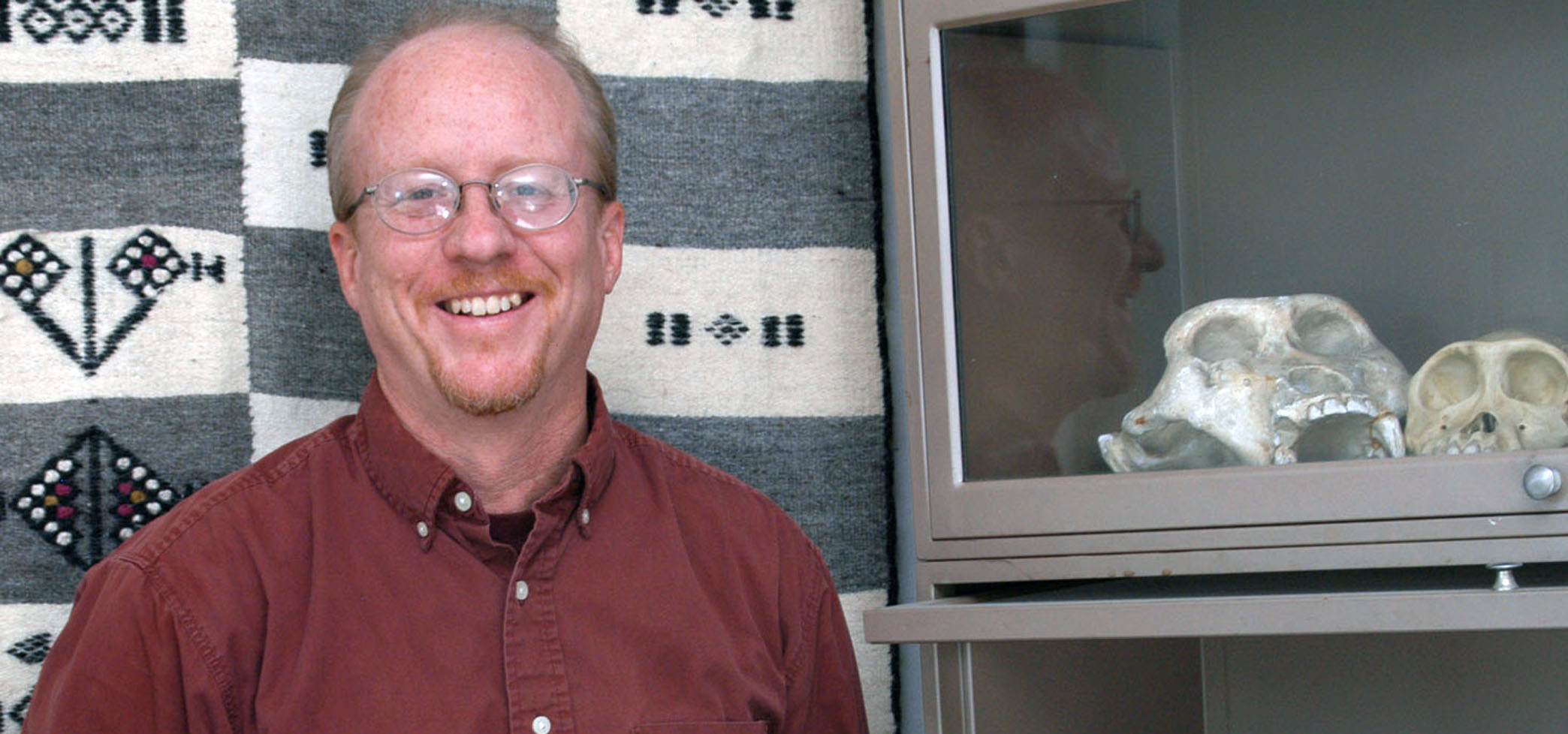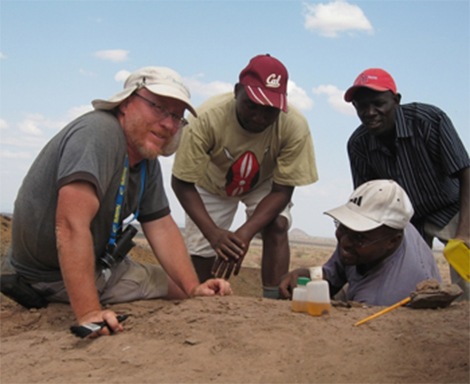
D. Tab Rasmussen, PhD, professor of anthropology in Arts & Sciences at Washington University in St. Louis, died Thursday, Aug. 7, 2014, after an accident at his home in Edwardsville, Ill. He was 56.
Rasmussen was a highly recognized physical anthropologist specializing in paleontology and behavioral ecology, especially among primates. He published more than 85 scholarly articles in his field.
“Tab had a brilliant career at Washington University and leaves behind a remarkable record of teaching, research and service,” said T.R. Kidder, PhD, chair of anthropology and the Edward S. and Tedi Macias Professor in Arts & Sciences. “He was a wonderful colleague and was widely known for his excellence in the classroom.”
Born June 17, 1958, in Salt Lake City, Rasmussen earned his doctorate at Duke University in 1986 under the direction of Elwyn Simons and was an assistant professor at University of California, Los Angeles, before joining the anthropology faculty here in 1991. He became a full professor in 2001.
Rasmussen served in several university leadership roles, including director of the graduate program (1993-96; 2004-06) and as a member of the Graduate Council (1993-96, 2004-06) in Arts & Sciences. He served on the university’s Fulbright Committee (since 1999) and taught in the Environmental Studies program here since 1993.
Rasmussen studied primate evolution by drawing on two major lines of evidence: the fossil record and the comparative study of living primates. This research sought to trace the actual course of primate evolution and to demonstrate that detailed studies of primate evolution can provide insight into the evolutionary process itself. He was particularly interested in major evolutionary transitions, such as primate origins and anthropoid origins. He also had research interests in the adaptive radiations of prosimian primates, both living and extinct.
He did paleontological and archeological research in Egypt, Kenya, Libya, Ethiopia, Namibia, South Africa, Madagascar, Ecuador and Colombia, as well as in the states of California, Wyoming, Utah, Arizona and New Mexico. He also did behavioral research in Costa Rica (monkey, woolly opossums and bird populations); Brazil (monkey and bird populations); Solomon Islands (sea eagle populations); and on Ethiopian bird populations.
Rasmussen specialized in growth, life history and evolutionary biology of living primates, especially lemurs, lorises, galagos and tarsiers. He also did extensive work on fossil mammals and birds, as well as early human evolution.
“Tab brought remarkable anthropological, ecological and evolutionary insights to bear on the world’s earliest primates,” said colleague Fiona Marshall, PhD, professor of anthropology. “He was one of the few people who was able to synthesize all the data on some of our most ancient relations.”
Known as an exceptional teacher and graduate student mentor, he taught courses on the history of physical anthropology and human osteology and enjoyed co-teaching a course with a cultural anthropologist on human evolution as represented in film and culture.
His primate courses included primate biology, evolution, functional morphology, paleobiology and phylogeny.
The Graduate Student Senate twice recognized Rasmussen for excellence in mentoring. Students also selected him for an Outstanding Teaching Award and a Mortar Board Teaching Award. He was the PhD adviser to nine graduate students in the department.
Glenn C. Conroy, PhD, professor of anthropology in Arts & Sciences and of anatomy in the School of Medicine, credits Rasmussen with introducing him to the grandeur of the American West.
“There is no one for whom I had greater admiration, and no one with whom I shared more adventures,” Conroy said.
“Together, we rafted the middle fork of Idaho’s Salmon River, visited Yellowstone and the Grand Canyon, and spent many summers camping and exploring for early mammalian fossils in Utah’s Uinta Basin. Tab was the sort of person who created his own energy field around him, and I, like so many others who knew him well, will always remember circling with him in those orbits.
“Tab Rasmussen was my academic soul mate for over two decades. He was equally at home in the classroom, laboratory and field and had both a scientist’s and an artist’s appreciation for all aspects of natural history and evolution. He was a true polymath and wrote authoritatively on subjects as diverse as paleontology, primatology, ornithology and behavioral ecology.”
